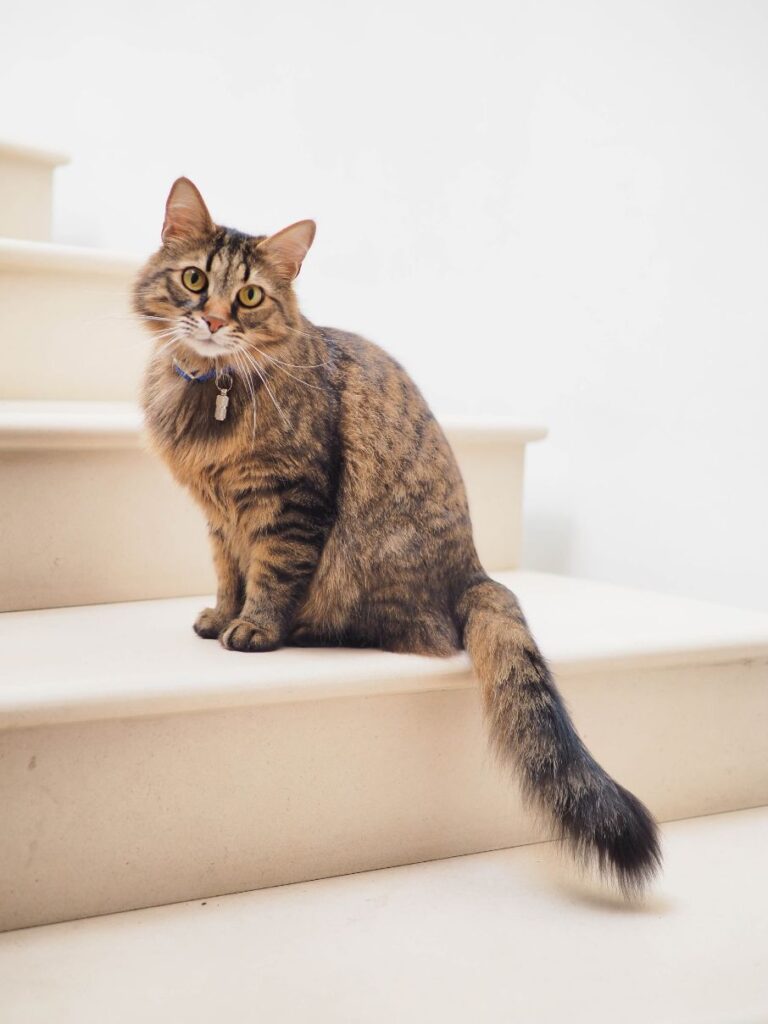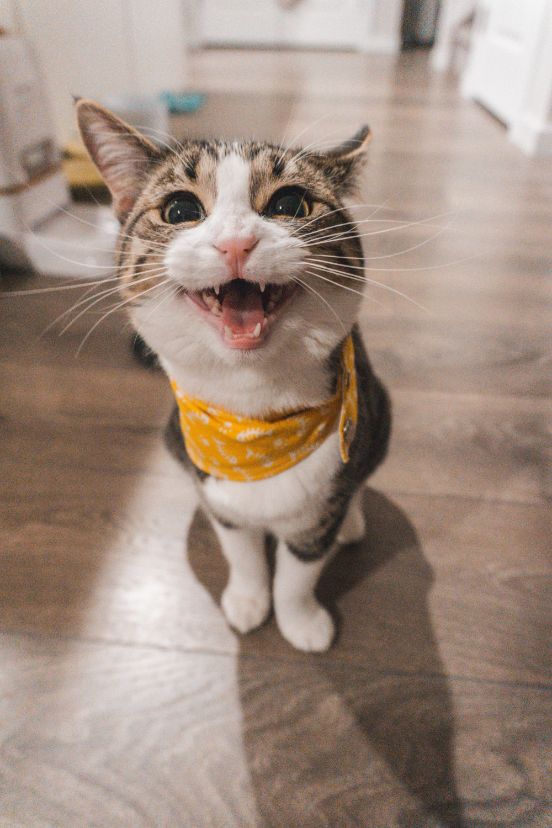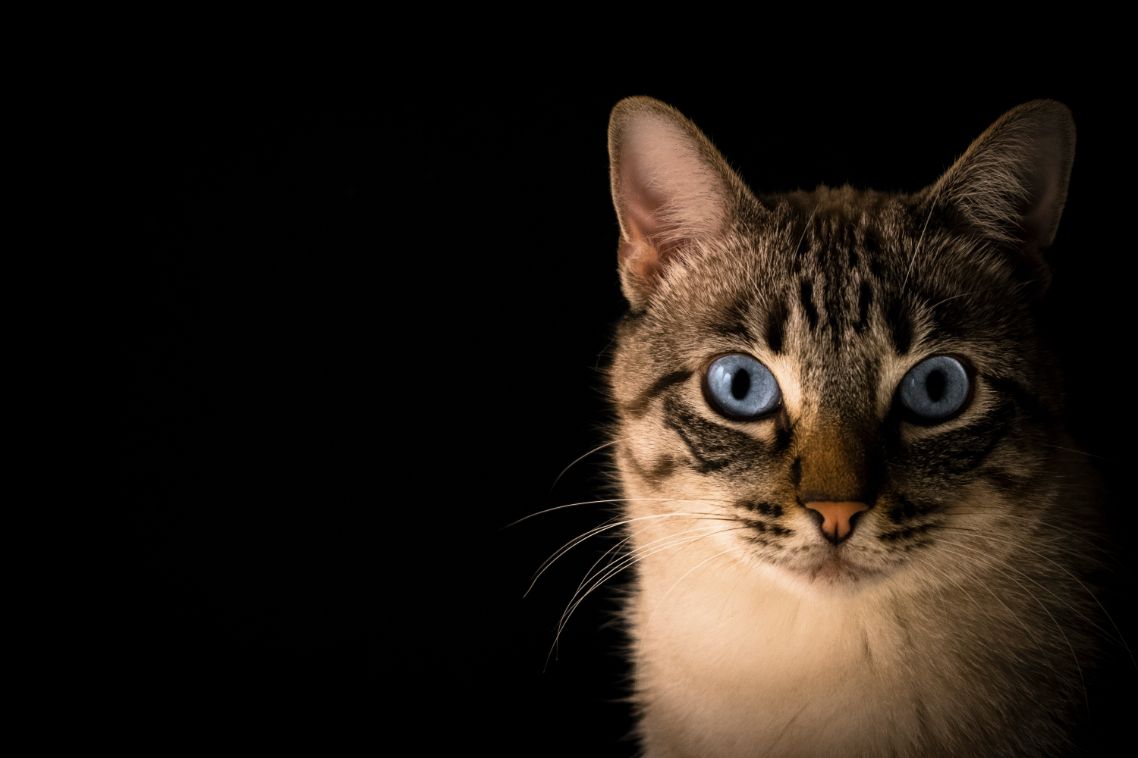Dogs frequently exhibit heavy breathing and panting as a means of cooling off. Cats don’t frequently exhibit this behavior, though. If your cat is panting (breathing through the mouth), breathing heavily, laboriously, erratically, or in any other way, it is definitely worth looking into further. You should examine each potential cause one at a time if your cat exhibits abnormal breathing patterns.
So, why does your cat breathe heavily? What should you do next? Does it matter? Don’t worry. Read this article and you can learn more about heavy breathing in cats.
Table of Contents
Types Of Heavy Breathing In Cats
The term “heavy breathing” is general. Let’s examine some of the different types of breathing specifically and what that might imply.
- Cat Panting – In contrast to dogs, cats do not pant unless they are extremely overheated. For instance, it is almost never typical for your cat to pant after playing. Even though it may not sound dangerous, cats will occasionally pant when they are very stressed. You should try to determine why they are stressed and what you can do to make things better.
- Cat Wheezing – When a cat exhales, you typically hear wheezes, which are high-pitched noises. They might indicate a partial blockage of the airway, such as the airway narrowing brought on by feline asthma.
- Cat Breathing Fast – Insufficient oxygen intake or carbon dioxide excretion causes cats to breathe rapidly. A cat’s breathing may become rapid after exercise, but it should quickly return to normal after rest. Numerous conditions, such as lung disease, illnesses of the upper respiratory tract, heart disease, metabolic disorders (such as uncontrolled diabetes), blood disorders, high body temperature, pain, or stress can make a cat breathe quickly.
- Cat With Labored Breathing – Cats with respiratory issues may also attempt to make up for their difficulties by breathing more deeply. They often appear to be exerting a lot of effort to breathe, if you look closely.
- Open-Mouth Breathing in Cats – Cats are made to breathe through their noses. Open-mouth breathing may indicate that someone is having a lot of difficulty breathing or that they are unable to breathe through their nose.
- Cat Sounds Congested When Breathing – Cats who have upper respiratory infections frequently experience nasal congestion in addition to nasal discharge. If your cat sounds “gurgly” but its nose looks normal, the congestion may be in the lungs, which could be a symptom of pneumonia, heart disease, or another serious health problem.
- Cat Breathing Loudly (Noisy, Raspy) – Air is typically forced past an abnormally narrow area in the respiratory tract when noisy breathing occurs. This may occur if there are issues with the pharynx (the area behind the mouth and nose), the trachea, or the small airways.
- Cat Breathing Heavily While Resting – Only after a particularly arduous workout is heavy breathing in cats acceptable. With the exception of the occasional deep sigh, heavy breathing while at rest is associated with risky medical conditions like severe lung disease or heart failure.
- Cat With Shallow Breathing – Particularly when they are sleeping, healthy cats may appear to breathe shallowly. Shallow breathing, however, is abnormal if it is accompanied by other signs like an open mouth, rapid breathing, or labored breathing.
- Cat With Abdominal Breathing – A cat’s abdomen will move slightly during normal breathing, but it shouldn’t need to contract its abdominal muscles in order to breathe. This is a symptom of cats who are having difficulty breathing.

Possible Causes Of Heavy Breathing In Cats
Vets often hear from concerned pet parents wondering, “why is my cat breathing heavily?”. Here are a few potential causes for your cat’s panting or labored breathing.
Asthma
Wheezing, coughing, panting, heavy breathing with the mouth open, and an accelerated respiratory rate are all typical symptoms of feline asthma. Although asthma in cats may not be curable, corticosteroids or bronchodilators can effectively manage the condition.
Heartworm
Breathing issues in cats with heartworm are possible. Heartworm can be treated with supportive care that uses corticosteroids to lessen inflammation and oxygen therapy in more severe cases. Because heartworm disease is extremely dangerous and potentially fatal, our veterinarians advise keeping your cat on a monthly heartworm preventative medication.
Hydrothorax & Congestive Heart Failure
The condition known as hydrothorax is characterized by the buildup of fluid in and around the lungs, which can lead to rapid, deep breathing, coughing, and panting. In addition to medications to dilate blood vessels, eliminate extra fluid, and increase the heart’s contraction force, dripping the fluid may be used as a form of treatment.
Respiratory Infections
It might be difficult for your feline friend to breathe normally if they have a respiratory infection. Cats who have respiratory infections may breathe heavily or pant. Although these infections frequently start out as secondary bacterial infections, they typically start out as viral infections.
To help your cat breathe easier, you might need to treat its condition with antibiotics. As your cat recovers, humidifiers and steam can assist in liquifying mucus and facilitating easier nasal breathing.
Other Possible Causes Of Heavy Breathing In Cats
Cats may pant or breathe heavily due to anemia, neurological conditions, trauma, enlargement of the abdomen, and pain.
What Does Heavy Breathing In Cats Look Like?
The norm is that you shouldn’t really notice your cat breathing. If your cat is breathing heavily, stress, anxiety, or overheating may be to blame. The labored breathing that cats occasionally exhibit is strikingly similar to cat panting. Similar to dog panting, labored breathing is common in cats.
Even though a cat can pant like a dog, this behavior needs to be infrequent and free of alarming signs like flaring nostrils. For instance, it’s usually not a cause for concern if you observe your cat panting after playing on a warm summer day for a few minutes.
If your cat is experiencing respiratory distress, there are a number of symptoms to watch for. A few of the most common include:

- Standing or crouching with elbows splayed and the head and neck stretched away from the body
- Tachypnea (increased respiratory rate, up to 40 breaths per minute)
- Shallow, short, noisy, or particularly raspy or rattling breaths
- Regular breathing with the mouse open
- Blue or purple gums (which might indicate your cat can’t get enough oxygen)
- Accompanying behavioral changes like hiding, loss of appetite, or lethargy
Contact a vet right away for a thorough examination if your cat exhibits any of these symptoms.
What To Do If Your Cat Is Having Breathing Issues?
Don’t ever ignore a cat’s labored breathing. Make an appointment with your veterinarian unless your cat has undergone a brief period of stress, such as a few laps around the house (and they quickly return to normal), or has experienced some other recent stress.
Even if it means making a late-night trip to the emergency room, you should see a veterinarian right away if your cat’s symptoms are severe. Largely unresponsive cats may be on the verge of collapse. Keep your cool while rushing to get them into a carrier and to a vet clinic nearby.
Treating And Preventing Heavy Breathing In Cats
The cause must be addressed before treating a cat with difficulty breathing. For instance, FIP can lead to fluid buildup in the chest, which can make breathing difficult; a veterinarian should keep an eye on viral infections in case dehydration or other side effects manifest. The appropriate course of action will also depend on whether it is determined that your cat has a tumor in its chest or a foreign body in its airway.
The prevention of heavy breathing is a completely different matter, and it depends on managing your cat’s health thoroughly. Keep in mind that a healthy cat typically breathes between 15 and 30 times per minute while dozing off or relaxing.
Simply counting breaths a few times can be used to independently check the respiratory rate to make sure the results are reliable. A vet should be contacted right away if you notice a pet breathing more than 30 times per minute along with other unsettling signs like lethargy, blue gums, or hiding.
Keep the heartworm, flea, and tick prescriptions up to date, and make sure to have your cat examined by a vet at least once per year. The first step in figuring out when something is off is to be aware of your cat’s typical behavior. Keep in mind that your cat will always look to you for protection.
